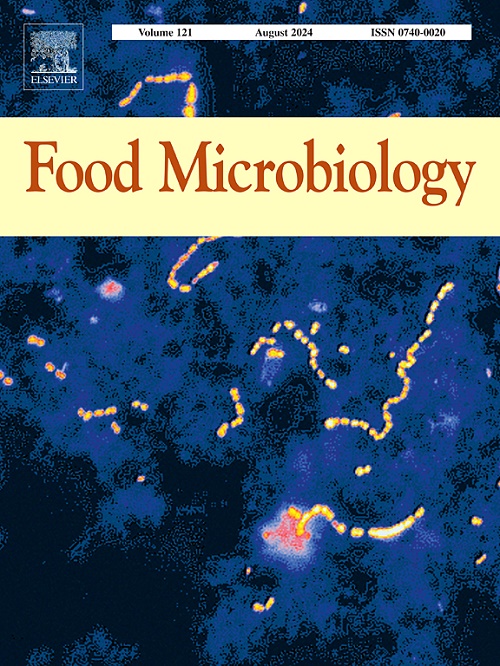Exploring the evolution of microbial communities from the phyllosphere and carposphere to the grape must of Vitis vinifera L. cv's Chardonnay and Pinot noir
IF 4.5
1区 农林科学
Q1 BIOTECHNOLOGY & APPLIED MICROBIOLOGY
引用次数: 0
Abstract
Microbial communities associated with the grapevine phyllosphere and carposhere are a fundamental determinant of grape and wine quality. High throughput amplicon sequencing was used to profile the fungal and bacterial communities on the associated phylloplane and carposphere of Vitis vinifera L. cv's Chardonnay and Pinot noir in the Elgin and Hemel-en-Aarde wine districts of South Africa in the 2021–2022 growing season. The subsequent grape must was analysed to determine the prevalent microbiome. The most abundant bacterial and fungal genera found in both the phylloplane and carposphere of Chardonnay and Pinot noir were Pseudomonas and Filobasidium. The LEfSe (Linear discriminant analysis Effect Size) revealed significant differences in fungal and bacterial biomarkers from leaf, berry and grape must samples; however, no biomarkers were identified for cultivar nor location. Fungal β-diversity was significantly similar at different phenological stages, whereas bacterial β-diversity was significantly similar regardless of the site of colonisation. However, skin integrity of the grapes was may have influenced the microbial diversity.
探讨葡萄(Vitis vinifera L. cv)的霞多丽(Chardonnay)和黑皮诺(Pinot noir)从根圈和碳圈到葡萄果皮的微生物群落演化
葡萄叶圈和树圈的微生物群落是葡萄和葡萄酒品质的基本决定因素。利用高通量扩增子测序技术分析了南非Elgin和Hemel-en-Aarde葡萄酒产区霞多丽(Chardonnay)和黑皮诺(Pinot noir)葡萄种植区2021-2022生长季叶平面和碳圈的真菌和细菌群落。随后的葡萄必须进行分析,以确定流行的微生物组。在霞多丽和黑皮诺的叶面和碳圈中发现的最丰富的细菌和真菌属是假单胞菌和丝状霉属。线性判别分析效应大小(LEfSe)显示,叶片、浆果和葡萄样品的真菌和细菌生物标志物存在显著差异;然而,品种和地点均未发现生物标志物。真菌β多样性在不同物候阶段显著相似,而细菌β多样性在不同的定植地点均显著相似。然而,葡萄皮的完整性可能影响了微生物的多样性。
本文章由计算机程序翻译,如有差异,请以英文原文为准。
求助全文
约1分钟内获得全文
求助全文
来源期刊

Food microbiology
工程技术-生物工程与应用微生物
CiteScore
11.30
自引率
3.80%
发文量
179
审稿时长
44 days
期刊介绍:
Food Microbiology publishes original research articles, short communications, review papers, letters, news items and book reviews dealing with all aspects of the microbiology of foods. The editors aim to publish manuscripts of the highest quality which are both relevant and applicable to the broad field covered by the journal. Studies must be novel, have a clear connection to food microbiology, and be of general interest to the international community of food microbiologists. The editors make every effort to ensure rapid and fair reviews, resulting in timely publication of accepted manuscripts.
 求助内容:
求助内容: 应助结果提醒方式:
应助结果提醒方式:


